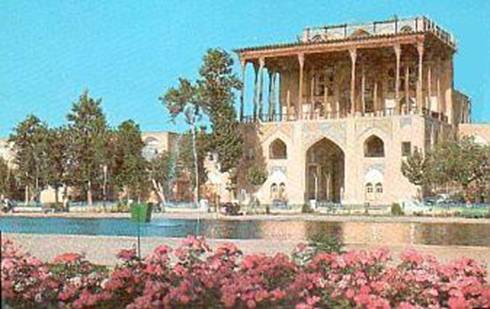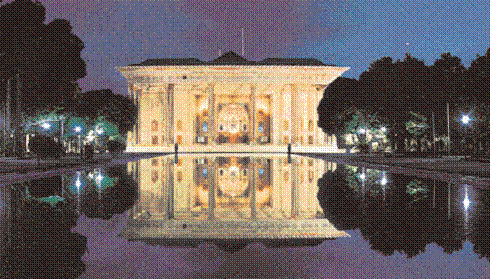HISTORY OF ESFAHAN
Esfahan (historically also rendered as Ispahan or Hispahan, Old Persian: Aspadana, Middle Persian: Spahān,) is the capital of the Esfahan Province and Iran's second most populous metropolitan area after Tehran. It was once considered one of the largest cities in the world. It flourished for centuries, particularly in the 16th century under the Safavi Dynasty, when it became the capital of Iranzamin.
Even today, the city retains much of its past glory. It is famous for its architecture, with many beautiful boulevards, covered bridges, palaces, mosques, and minarets. This has led to the Persian proverb Esfahan Nesf-e-Jahaan (Esfahan equals half of the world).
The history of Esfahan can be traced back to the Palaeolithic period. In recent discoveries, archaeologists have found artefacts dating back to the Palaeolithic, Mesolithic, Neolithic, Bronze and Iron ages.
Ancient Esfahan was part of the Elamite empire. Under the name Aspandana it became one of the principal towns of the Median (Maad) Dynasty, when Iranian Medes settled there. Subsequently the province became part of the Achaemenid Empire.
Note: It was during the Achaemenid (Hakhamaneshi) era that the name
After the liberation of Iran from Macedonian occupation by the Parthian Arsacids (the ancient Iranian dynasty also called Arshakuni, which later branched out and began a strong Armenian kingdom), Esfahan became part of the Parthian Empire. The city was then the center and capital of a large province, which was administered by Arsacid governors.
In the Sassanid era, Esfahan was governed by "Espoohrans" -- members of seven noble Iranian families who had important royal positions -- and served as the residence of these noble families as well.
In the reign of Malek Shah I of the Seljoogh Dynasty, the city was again selected as capital and commenced another golden age. In this period, Esfahan was one of the most thriving and important cities of the world. The famous Persian philosopher Avicenna (Pour Sina, also known as Abu Ali Sina) lived and taught there in the 11th century.
The next time the city flourished was during the Safavid Dynasty. The Golden Age of Esfahan arrived during the late 16th and early 17th centuries under Shah Abbas the Great (1587-1629), who made it the new capital of the Safavi Dynasty.
At that time, Esfahan reached its pinnacle and became the center of major political and social activities. Shah Abbas built his majestic palace, Alighapoo, on the western side of the magnificent Naghsh-e-Jahan Square, also known as Maidan Shah (Shah’s Square).
Today, Alighapoo, Khajoo Bridge, Chehel Sotoon and the city’s other beautiful architectural and historical landmarks make Esfahan among the most sought-after tourist attraction cities in the world.
And most of those historical landmarks, along with many in other parts of the country, were either built by our Ostad family members, or at one time or another were renovated by them – and all were graced by the intricate, diverse mosaic tiles called Kashikari.
Alighapoo, the palace of Shah Abbas, was built in the 17th century.
Chehel Sotoon (40 columns), the pavilion where receptions were held for dignitaries and ambassadors, has 20 columns facing a large pool of water. The name was inspired by the mirror-reflection of the columns, which makes the building appear like it has 40.
Today the magnificent Naghsh-e-Jahan Square, which houses Alighapoo palace, right, is a major landmark in Esfahan and also houses a large covered bazaar where tourists can purchase a large variety of Persian Carpets as well as arts and crafts.


